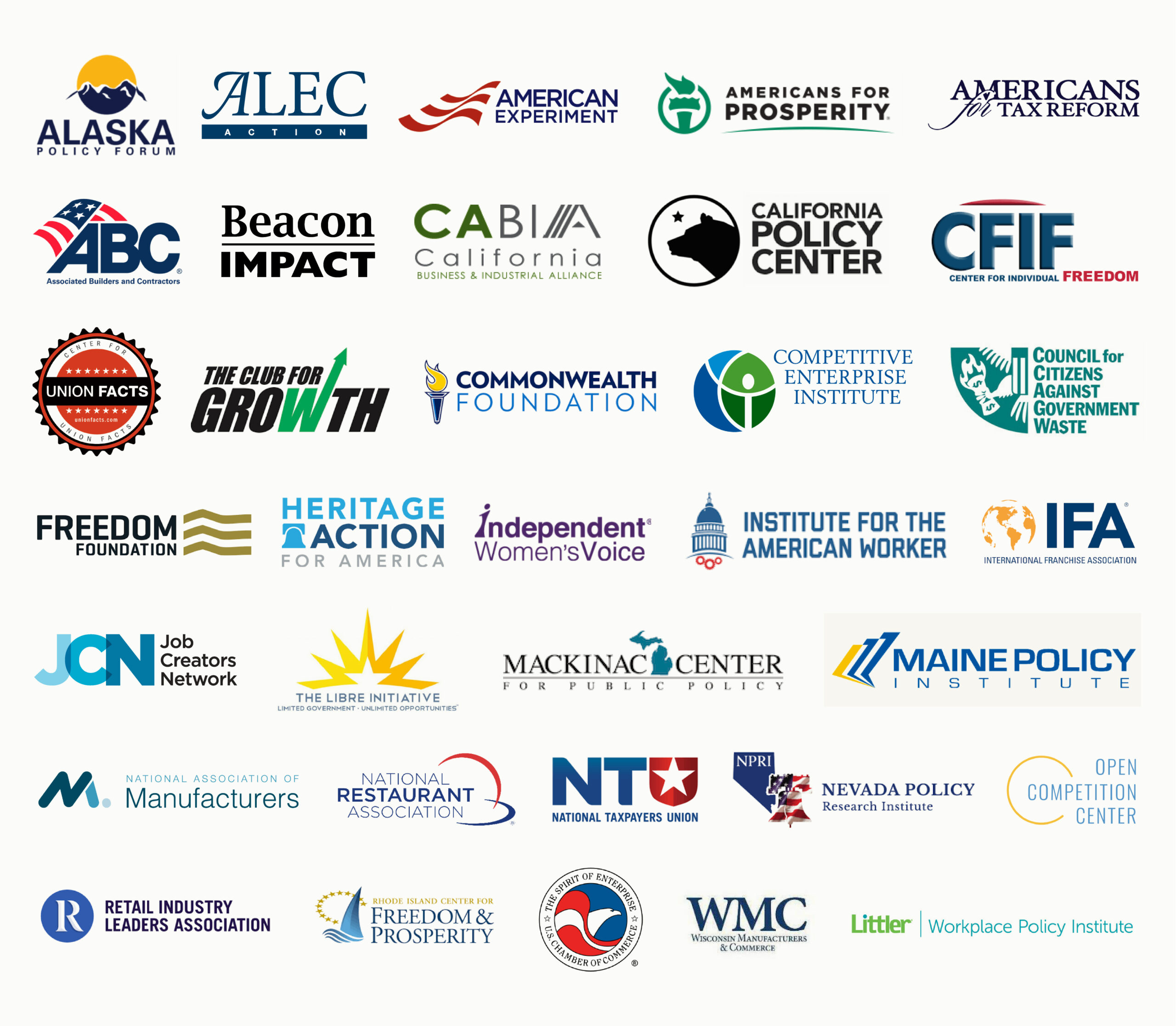What Do Americans Think?
According to national polling, over 65 percent of Americans support the ERA’s key provisions.
Dues for Politics
Since 2010, union officials have spent over $1 billion in member dues on left-wing political advocacy — without employees’ permission.
What Does the ERA Accomplish?
1) Secret Ballot Elections
Guarantee that a majority of all employees have a right to a secret paper ballot election. Prevents pressuring an employer to deny a secret ballot election.
70% of all households were strongly/somewhat supportive.
76% of union households were strongly/somewhat supportive.
According to data from the National Labor Relations Board (NLRB), in 38% of all union recognitions in 2009, the latest year for which data is available, unions bypassed secret ballot elections and instead used card checks to unionize employees. Specifically, the NLRB reports that unions won 794 single-union representation elections. During that period, the NLRB recorded 485 notices of card check union recognition.
Currently, unions can bypass secret ballot elections by using paid labor organizers to persuade workers to sign “card check” agreements authorizing union representation. Following that, they can pressure companies to “voluntarily” accept a card check recognition of the union. Unions’ pressure tactics run from paid picketers to political fights to brand attacks and much more. Union front groups are common, as are bogus attacks by other community groups on the union’s payroll.
Unions’ overall modus operandi is to blackmail a business by escalating pressure tactics until it capitulates to the card check. The process is unregulated, and anecdotal evidence suggests that signed agreement cards are often obtained through deception, coercion, and intimidation of employees.
By requiring a federally supervised secret ballot election, unions and employers could not agree to deny employees the right to vote in private.
2) Political Protection
Require unions to receive opt-in permission from each member to use his or her union dues for purposes other than collective bargaining (e.g., political support).
76% of all households were strongly/somewhat supportive.
76% of union households were strongly/somewhat supportive.
Exit polls from 2016 demonstrate that 43 percent of union households voted Republican, yet 86 percent percent of union political support went to Democratic candidates. There is a disconnect between the unions’ political agenda and their members’ personal ideology.
Currently, labor law allows unions to deduct money for supporting political campaigns from an employee’s paycheck without obtaining prior approval. Only by following the often onerous procedure to demand a refund of partial dues or by resigning from a union can employees guarantee that their money will not support candidates or a political party. The process is often overly complicated, completely unregulated, and rife with intimidation. By requiring that union members opt-in rather than having to pursue a refund of dues, employee rights will be better protected.
Some states have passed paycheck protection laws for their public sector state and local employees (who are not covered by federal labor law). The Employee Rights Act’s paycheck provision would institute protection for private sector workers in the United States.

3) Employee Privacy Protections
Limits the amount of employee personal information a union receives during an organizing drive.
79% of all households were strongly/somewhat supportive.
79% of union households were strongly/somewhat supportive.
In 1969 the National Labor Relations Board ruled that an employer must turn over employees’ personal contact information within seven days of ordering a union formation election. In some circumstances, employees have reported that labor union organizers have used the information to visit employees at their homes and pressure them to vote for the union.
There is currently no ability for employees to prevent their personal information from being disclosed to the National Labor Relations Board and to the union that seeks to represent them. The ERA limits the amount of employee personal information a union receives during an organizing drive. In addition, the bill makes it an unfair labor practice if the union uses employees’ personal information for any reason other than a representation proceeding.

4) Protections for Local Businesses
Give more Americans the opportunity to realize their dream of starting their own business.
65% of all households were strongly/somewhat supportive.
64% of union households were strongly/somewhat supportive.
Labor unions have attempted to eliminate the franchise model by asserting that businesses should be held liable for other businesses, even if those businesses are not under their direct control. This has created confusion for employers and employees alike, and threatened the franchise model – a popular pathway to small business ownership for so many Americans.
The ERA includes protections from the Save Local Business Act that codify the longstanding and common sense precedent that preserves the path to owning one’s own business for thousands of Americans. This provision provides clarity on the joint-employer standard by stating that businesses should not be held liable for other businesses that are not under their control.

5) Protection for Independent Contractors
Updates the current law to keep the definition of an “employee” in line with the common-law definition used by several state statutes and recent Supreme Court rulings.
Millions of Americans enjoy the flexibility of being an independent contractor but unclear or ever-changing definitions of the term “employee” threaten to reclassify countless workers.
The common-law test established by the ERA determines the appropriate classification for a given worker by relying primarilyon the degree of control and independence that worker maintains. The ERA creates consistency when it comes to defining employee and independent contractor status, providing much-needed clarity for both workers and employers.
Thank you to our supporters!
The following organizations have endorsed the Employee Rights Act:
